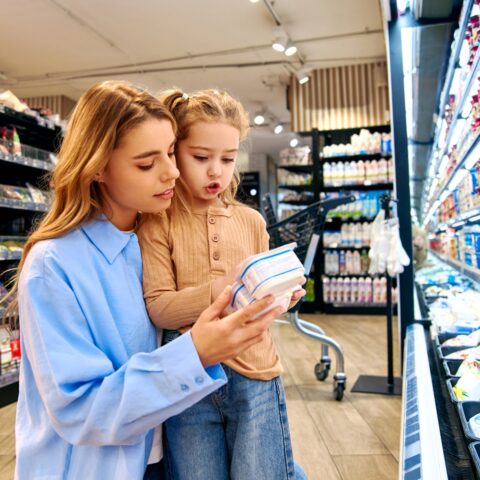What to Buy at the Grocery Store for the Lowest Carbon Footprint

First, the bad news. Everything we eat has an impact on the environment—in some cases, a big impact.
According to the U.S. Environmental Protection Agency, agriculture and other land uses account for 24 percent of greenhouse gas emissions across the world. The good news is, we can significantly reduce the carbon emissions of our diets by choosing what’s on our plates carefully.
Some foods have a much lighter impact on the world than others—and many of the best ones fit right into The Paleo Diet®.
Where do the emissions come from?
Greenhouse gas emissions (carbon dioxide, nitrous oxide, and methane) from agriculture can be traced back to a few sources, including deforestation that makes room for farms and ranches. This is a double whammy since forests are big consumers of carbon dioxide and many of the ranches that replace them are producers. And then there are the fossil fuels that are burned through using farm machinery and making fertilizer.
Another big source is the animals we raise for food themselves. Many of them—particularly cows, sheep, and goats, known as ruminants—create a lot of methane, a potent greenhouse gas, through the process of digestion. Methane stays in the atmosphere for a shorter time than carbon dioxide, but it can still be damaging. Packaging and shipping foods also have their impact, but production is the most important factor. Experts estimate 68 percent of a food’s emissions come from production, versus just five percent for transportation. (The rest comes from a variety of causes such as processing and refrigeration.)
While animal-based foods certainly have a substantially larger footprint, it’s important to point out that plant agriculture still has a carbon footprint—especially large mono-crop production. So, it’s important to pick your plant foods carefully as well.
The best low-carbon foods to buy at the grocery store
Generally, the foods with the lightest environmental impact are the ones farthest down the food chain. Fruits and vegetables tend to be the best for the planet. (And they are full of nutrients for us, too.)
Proteins tend to have more impact, but they vary widely in terms of emissions. Red meat has the largest carbon footprint, while poultry, pork, fish, nuts, and eggs have smaller ones.
Here’s what to look for, from lower impact to higher.
Produce
Fresh, unprocessed fruits and veggies rank high on eco-friendliness.[1] Not only are their carbon emissions relatively low, they also have lower potential for other types of pollution, such as acidification and eutrophication.
And because the transportation of food adds to their carbon footprint, it’s smart to look for produce that’s local and in season for the most environmentally friendly options. Depending on where you live, right now that might be collard greens, rhubarb, asparagus, broccoli, and/or carrots. And unless you live in a warmer climate, the best choice might be to cut back on far-flung produce like avocados or bananas.
Green thumb? You can’t get more local than your own backyard.
Oysters, mussels, and clams
Are you a fan of bivalves? These briny morsels are an excellent choice from an environmental standpoint because they’re farmed using very sustainable methods and actually clean the water they’re in as they grow. Try a simple broiled oyster recipe with lemon pepper, add garlic and saffron to clams, or toss your mussels in a spicy tomato sauce.
Fish
Wild-caught fish are among the best protein sources in terms of the environment. After all, they raise themselves, without any production impact, and harvesting impact remains low if done sustainably.
Salmon are particularly eco-friendly because they’re caught close to shore, removing the need for fishing boats to burn lots of fuel looking for them. Plus, salmon is delicious glazed with Dijon, formed into burgers, and grilled with oranges.
But note that not all seafood is equally low-carbon: In general, farmed fish and crustaceans have a significantly higher footprint, as do wild-caught shrimp and lobster. However, the impact of farmed fish varies depending on the aquaculture practices used, and it is shifting in a positive direction with important environmental consequences.
Nuts and eggs
Some of the next-best protein sources are nuts and eggs.[2] For nuts, almonds, hazelnuts, and pistachios [3] are great choices: Snack on them by the handful, toss them into salads, or whip up your own trail mix.
As for eggs, we recommend that you fill up your cart with these protein-packed choices (ideally local eggs, but any will do) and use them in everything from a breakfast frittata to a bright poached egg soup.
The best meats
Unfortunately for steak lovers, when produced via non-regenerative practices, which is currently the norm, red meat is very carbon intensive. This is true not only for beef, but mutton and goat meat. Further, cows’ methane-filled burps contribute to climate change, too.
But you don’t have to go completely vegetarian to make your dinner kinder to the planet. Poultry is a much lower-impact choice. Herby chicken roasters or turkey shepherd’s pie, anyone?
Next up the ladder is pork, which accounts for a fraction of beef’s carbon footprint while still lending itself to delicious recipes like primavera tenderloin and herb-crusted chops.
And when you do decide to go for a serving of beef, keep in mind that the way the beef is raised matters. One steak could have 12 times the carbon emissions [4] of another, more sustainably produced steak. Get to know the producers behind the beef at your grocery store or butcher, and look for the ones who use sustainable grazing practices.
The bottom line
Did you notice that many of the foods that are friendliest to the environment are also healthy choices for us? When you’re trying to green up your diet, the principles of The Paleo Diet still hold true: Go for unprocessed, fresh foods; skip dairy (which has a very large carbon footprint, too); and think critically about where your food comes from.
Elisabeth Kwak-Hefferan
Elisabeth Kwak-Hefferan is a Montana-based freelance journalist who specializes in the outdoors, science, environment, and parenting.
More About The Author




